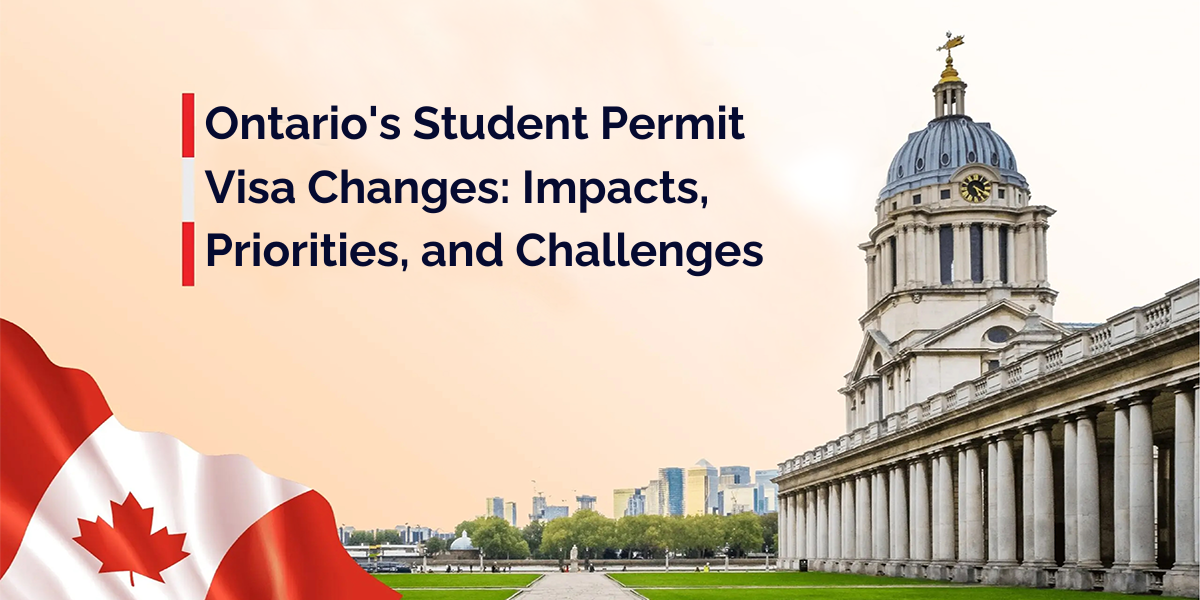Ontario’s Evolving Postsecondary Landscape: Impacts, Priorities, and Challenges
In recent months, Ontario’s postsecondary education sector has been undergoing significant shifts, shaped by both provincial and federal policies. From allocating caps on study permits to budgetary decisions affecting funding and tuition fees, the landscape for colleges and universities in the province is evolving rapidly. Let us understand the details, implications, and challenges facing Ontario’s higher education institutions.
Study Permit Allocation and Priorities
Ontario, like other provinces, faces new directives from the federal government regarding the allocation of study permits. The provincial government has announced that a staggering 96% of its allocated study permit applications will be directed towards public colleges and universities. This move, aimed at prioritizing critical sectors such as skilled trades, healthcare, STEM, and hospitality and child care and the ratio of international permits per institution cannot exceed 55% of the 2023 first-year domestic enrolment. Some 11 of 24 colleges are expected to keep applications at the 2023 level.
Provinces were told by federal government to release their plans for the 360,000 cap by the end of March.
British Columbia has confirmed that 53% of its 83,000 allocation will go to public post-secondary institutions, with the remaining 47% for private institutions.
Nova Scotia has been allocated 12,900 Provincial Attestation Letters, which are being used to prove that students have been accounted for under the cap.
Ontario was the province that was going to be most impacted by the federal government’s cap policy, as estimates had suggested the province would see a drop of some 133,000 students in the next year as a result of the cap.
Furthermore, French language institutions will be in precedence as per all reports. The restriction on the ratio of international permits per institution signals a strategic approach to maintaining the integrity and relevance of Ontario’s postsecondary education system. While these measures may present challenges for certain institutions, they ultimately serve the broader goal of ensuring a skilled workforce and fostering economic growth.
Against this backdrop of policy changes, Ontario’s 2024 Budget announcement brings both relief and apprehension for colleges and universities. A relief of substantial $1.3 billion funding boost and tuition fee freezes for domestic students offer immediate financial support. Additionally, investments in STEM, rural colleges, and student housing underscore the government’s recognition of diverse needs within the sector.
Navigating Forward: Opportunities and Imperatives
Against this backdrop of policy changes, Ontario’s 2024 Budget announcement brings both relief and apprehension for colleges and universities. A relief of substantial $1.3 billion funding boost and tuition fee freezes for domestic students offer immediate financial support. Additionally, investments in STEM, rural colleges, and student housing underscore the government’s recognition of diverse needs within the sector.
As Ontario’s higher education sector navigates these challenges, collaborations and innovations and to enhance operational efficiency to mitigate financial constraints considering prioritizing student support services, mental health initiatives, and diversity, equity become rather prominent.
At the policy level, continued dialogue between government entities and educational stakeholders is essential to address systemic issues and chart a sustainable path forward. Government’s recent open letter urged the government to commit to recommendations from the Blue-Ribbon Panel, which said more than $2.5bn in base revenue was needed for the postsecondary sector over three years
In conclusion, while Ontario’s postsecondary sector faces formidable challenges, it also holds immense potential for growth, innovation, and societal impact. By fostering collaboration and adaptability, colleges and universities can navigate the evolving landscape and continue to serve as engines of knowledge creation, workforce development, and social mobility for generations to come.






